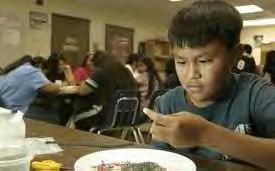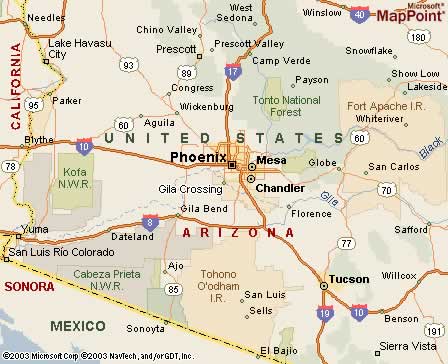|
|
Canku Ota |
|
|
(Many Paths) |
||
|
An Online Newsletter Celebrating Native America |
||
|
July 26, 2003 - Issue 92 |
||
|
|
||
|
Summer School Makes a Place for Native Crafts |
||
|
by Judy Nichols The
Arizona Republic
|
||
|
credits: Jack
Kurtz/The Arizona Republic
|
|
"This is the devil's claw," Tasheene, 12, said, lifting dark, curled fibers soaking in water. "It's for the dark part of the designs." The two girls are part of a summer school program at the Gila Crossing Community School that emphasizes basics like reading, writing and math, along with cultural preservation. "It's a mandate from the school board to teach tribal culture and agriculture every year, kindergarten through eighth grade," Principal Beverly Crawford said. The summer program, and the after-school program during the year, are funded with a federal grant from the 21st Century Community Learning Centers program. But the money will run out next May, and school officials are looking for other ways to support the program. For many of the students it is the first instruction they have had in beading, basketry, pottery and propagation of native plants, all skills practiced by the Pima and Maricopa tribes that call this area home. The Pimas are known for their intricately patterned baskets of willow shoots, cattails and devil's claw, woven so tightly they can hold water. "I know mine's not going to hold water," said Tasheene, laughing. The Maricopa Tribe is known for red clay jars and bowls made from clay dug locally and decorated with natural dyes. And for the brightly painted gourd rattles used in traditional dancing at wakes and cremations. "Sometimes we sing all night long," said Sterling Sunn, who is teaching the boys how to make the gourds. "Only males touch the gourds," he said. Reyes Walker, 13, carefully cleans out the inside of the dried gourd and sands it smooth on the outside. He and Sunn crack the skins off dried palm tree seeds and place the hard round seeds inside the gourd to make the rattling sounds. They add a handle of saguaro spine or cottonwood branch and paint bright designs on the gourd. At another table, Damian Sundust, 11, is beading a collar necklace. "My grandma told me women wear this at a wake," he said. In the greenhouse across campus, teacher Tim Moore is helping students water. "Agriculture is important for improving diets and for its historical heritage," Moore said. "We grow a lot of food that goes home: squash, chilies, watermelon. "This summer, as part of an entrepreneurship program, we've sold, i'itoi onions, a low desert bunching onion, to Native Seed Search. We grow carrots, spinach, lettuce, peas, beets, onions, garlic, aloe. And we make soap using loofahs that we grew in the garden." Cornstalks are part of a mural the children have painted on one of the school's block walls. The Pima, known for their farming ability, expanded the ancient irrigation system built by their ancestors, the Hohokam, and exported cotton, corn and wheat. "We started with words they wanted to include - sports, planets, mother earth, pottery - then came up with pictures that illustrated those words," said Jennifer Gonzales, one of the program's co-directors, who helped plan the mural. In the middle of the mural is the Pima "Man in the Maze" figure, showing a man standing in a circular maze. The maze takes the figure through his "lifepath" and the search for balance - physical, social, mental and spiritual. Dreams and goals are in the center of the maze. "It's someone going through their whole life trying to get somewhere," said Jennifer Acedo, 13. |
|
|
www.expedia.com |
|
|
||
|
|
||
| Canku Ota is a free Newsletter celebrating Native America, its traditions and accomplishments . We do not provide subscriber or visitor names to anyone. Some articles presented in Canku Ota may contain copyright material. We have received appropriate permissions for republishing any articles. Material appearing here is distributed without profit or monetary gain to those who have expressed an interest. This is in accordance with Title 17 U.S.C. Section 107. | ||
|
Canku Ota is a copyright © 2000, 2001, 2002, 2003 of Vicki Lockard and Paul Barry. |
||
 |
 |
|
|
The "Canku Ota - A Newsletter Celebrating Native America" web site and its design is the |
||
|
Copyright © 1999, 2000, 2001, 2002, 2003 of Paul C. Barry. |
||
|
All Rights Reserved. |
||
 Tasheene
Caudio sat across a table from another girl, slicing dried cattail
stalks for their intricate Pima basket.
Tasheene
Caudio sat across a table from another girl, slicing dried cattail
stalks for their intricate Pima basket. 